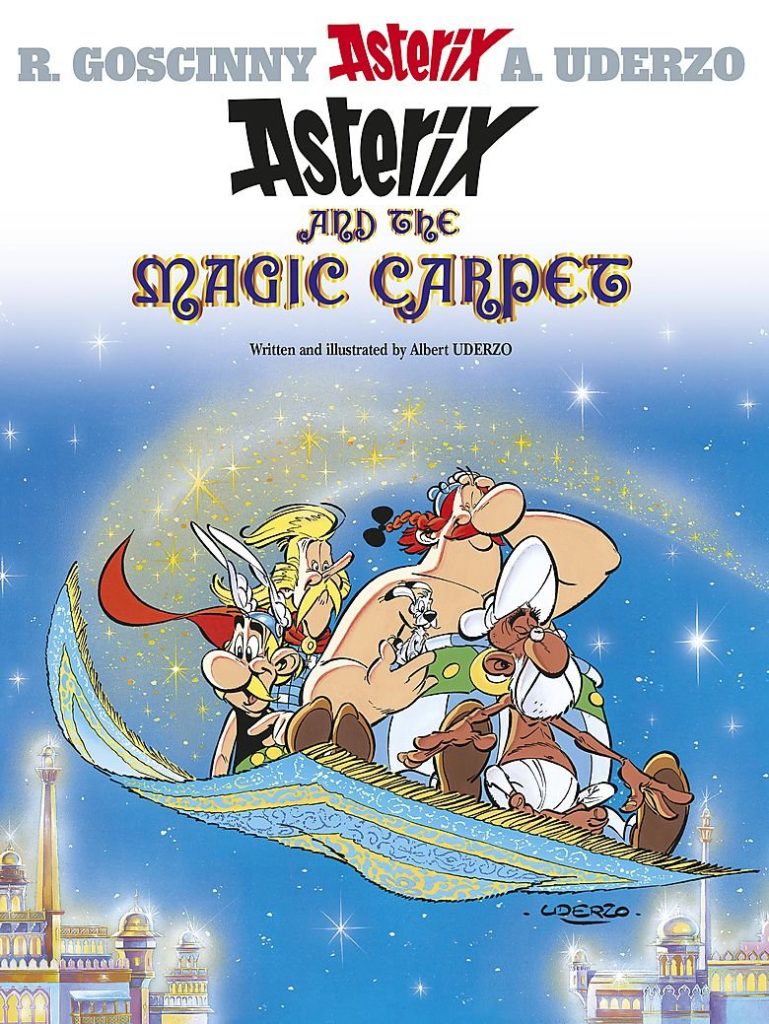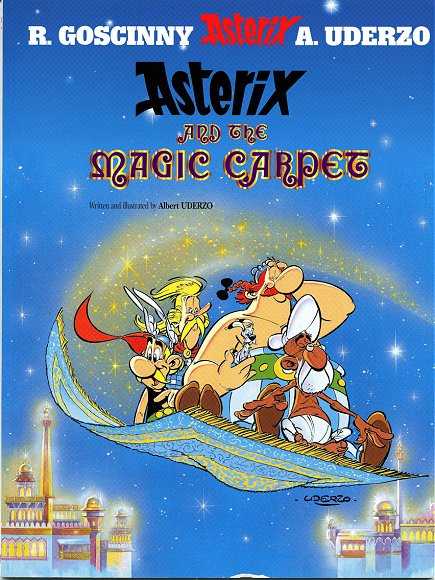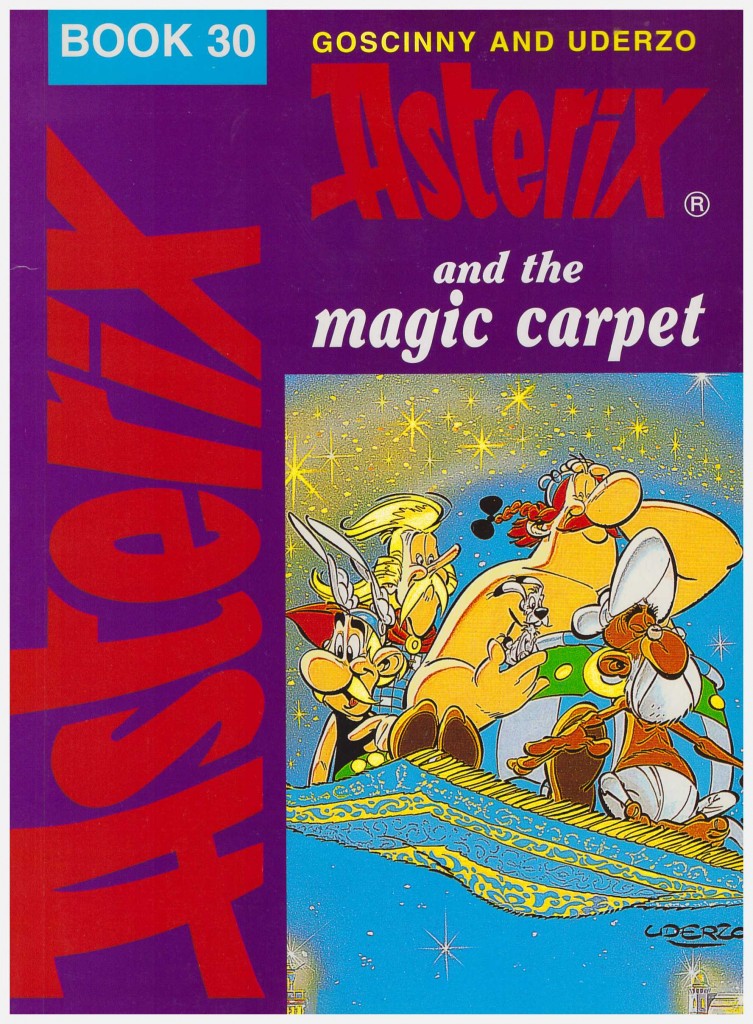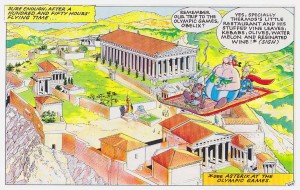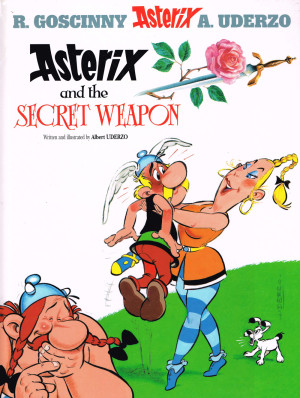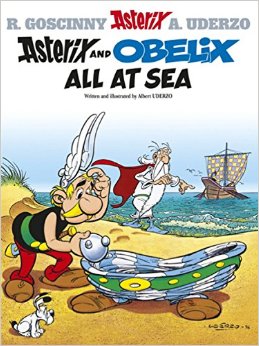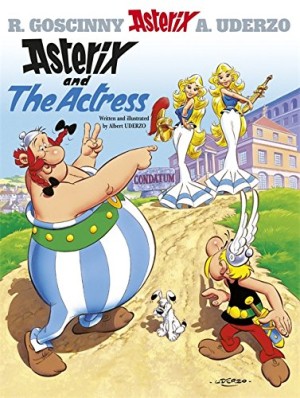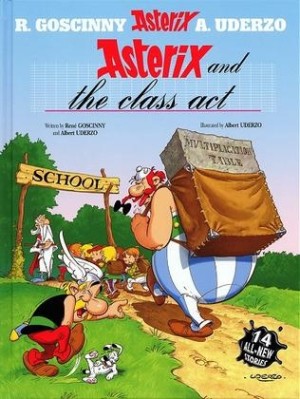Review by Frank Plowright
The fourth Asterix volume both written and drawn by Albert Uderzo, and as with the previous three, had one not read an Asterix book previously it would be a perfectly serviceable children’s adventure strip with top notch cartooning.
Uderzo becomes a better writer, but it’s a shame the progression occurred in public. He follows a well-travelled path in setting up the plot, with an exotic visitor to the village of the indomitable Gauls requiring help. This time it’s Watziznehm, an Indian fakir on his flying carpet who drops in. Literally. An unscrupulous and ambitious advisor to Rajah Watzit has blamed the lack of rain in India on the whim of the Gods, and decreed that if no rain has falls in 1001 hours then Princess Orinjade must be sacrificed to appease them. Luckily word has spread of the village bard Cacofonix, and how his singing is so bad he can cause rain. Had this gag been previously established it would work seamlessly, but introducing it here smacks of plot convenience.
Having set up the story, Uderzo then spends almost half the book with Asterix, Obelix and Cacofonix flying to India on Watziznehm’s flying carpet. Did the book’s title come first, or was it afterthought? It’s an overlong and bitty sequence and apart from the occasional good pun and the ongoing visual gag of Obelix’s weight putting a dent in the carpet, only serves as a delaying tactic.
The story improves once the Gauls arrive in India, with a linear sequence in which Cacofonix first loses his voice, and is then abducted. There’s the usual Asterix tour of the sights, subtly educating about accomplishment, geography and nature, but overall there’s little not drawn from far better Asterix stories.
Mention should also be made of possibly the most gruesome scene depicted in an Asterix book. As it seems rain will not occur the Princess is led to the chopping block, and her head laid upon it with the executioner and his massive axe looming above her. Throughout the series all violence is strictly comic exaggeration, and this jolt into a more explicitly detailed threat is an odd lapse from Uderzo.
